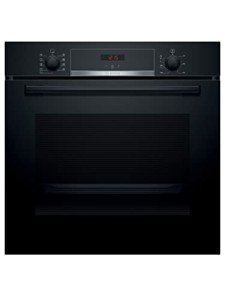The Ultimate Guide to Built-in Ovens: Enhancing Your Kitchen Experience
Built-in ovens have ended up being a popular choice in contemporary cooking areas, providing a mix of performance, design, and convenience. Unlike traditional freestanding ovens, built-in ovens are integrated effortlessly into kitchen cabinetry, offering a streamlined look that can improve the aesthetic appeal of any kitchen. This post explores the various kinds of built-in ovens, their advantages, setup considerations, and maintenance pointers.
Comprehending Built-in Ovens
Built-in ovens are designed to be installed directly into kitchen cabinetry, permitting for a more customized kitchen setup. They normally come in 2 primary types: single and double ovens.
Kinds Of Built-in Ovens
- Single Ovens: These units offer one cooking compartment, perfect for smaller sized cooking areas or homes where cooking needs are modest.
- Double Ovens: As the name suggests, these units include 2 separate cooking compartments, permitting users to prepare numerous meals at different temperature levels concurrently. This is especially useful for large families or those who often entertain guests.
- Steam Ovens: These ovens cook food utilizing steam, which can help maintain wetness and nutrients. Steam ovens are acquiring appeal due to their health benefits.
- Combination Ovens: These versatile appliances integrate the functions of a routine oven and a microwave, making them ideal for quick cooking and reheating.
Key Features to Look For
When thinking about a built-in oven, there are a number of functions that can enhance your cooking experience:
- Smart Technology: Many modern built-in ovens come geared up with clever technology, allowing users to control their oven from another location by means of smart device apps. Features consist of preheating the oven, changing cooking times, and keeping track of cooking progress.
- Self-Cleaning Functions: Built-in ovens with self-cleaning abilities can conserve time and effort in kitchen upkeep.
- Convection Heating: This feature flows hot air for even cooking, making it ideal for baking.
- Safety Features: Look for designs equipped with features like cool-to-the-touch oven doors and automated shut-off options for added safety.
Benefits of Built-in Ovens
Visual Appeal: Built-in ovens offer a streamlined and contemporary appearance that can improve the overall design of a kitchen. They can be integrated into kitchen cabinetry, making them less invasive than freestanding models.
Space Efficiency: Built-in ovens enhance kitchen area, especially in smaller cooking areas where every inch counts. They can be put at eye level, making it easier to keep track of cooking without bending down.
Improved Functionality: With their advanced features, built-in ovens offer enhanced cooking experiences and increased performance compared to traditional ovens.
Installation Considerations
Installing a built-in oven needs cautious planning and factor to consider. Here are some bottom lines to bear in mind:
- Space Requirements: Ensure that the selected oven fits comfortably into the readily available cabinet space. Procedure the dimensions precisely, accounting for ventilation and clearance requirements.
- Electrical Requirements: Built-in ovens usually require a devoted electrical circuit. Speak with an electrical contractor for correct setup.
- Ventilation: Proper ventilation is essential for ideal oven performance. Confirm that the setup area has appropriate ventilation to prevent overheating and guarantee safe operation.
- Professional Installation: While DIY installation might seem appealing, getting the assistance of a professional can make sure that the oven is installed properly and securely.
Setup Steps
| Installation Step | Description |
|---|---|
| Step 1: Measure | Measure the cabinet opening for your oven. |
| Action 2: Prepare | Prepare the electric outlet and ventilation alternatives. |
| Action 3: Connect | Link the oven to power, ensuring all precaution are abided by. |
| Step 4: Secure | Secure the oven within the kitchen cabinetry, using proper screws and brackets. |
| Step 5: Test | Run a test to guarantee the oven is working properly. |
Upkeep Tips
Routine upkeep can extend the life of your built-in oven and guarantee optimal efficiency. Here are some maintenance suggestions:
- Clean Regularly: Wipe down the oven outside and tidy the interior routinely. Usage self-cleaning functions where offered.
- Check Seals: Ensure that door seals are undamaged to preserve efficiency and cooking performance.
- Screen Performance: Pay attention to how your oven functions-- if you discover uneven cooking or uncommon noises, it may require expert servicing.
- Follow Manufacturer Guidelines: Always abide by the upkeep standards offered by the manufacturer. This can help avoid concerns and guarantee that service warranties remain legitimate.
FAQs about Built-in Ovens
What is the distinction in between a built-in oven and a freestanding oven?
- Built-in ovens are integrated into cabinets, offering a streamlined appearance, while freestanding ovens are standalone appliances that can be put throughout the kitchen.
Do built-in ovens need more upkeep than routine ovens?
- Not necessarily. Maintenance depends on usage and cleaning practices more than the type of oven. Routine care is essential for all ovens.
Can I set up a built-in oven myself?
- While it is possible to set up a built-in oven yourself, it is advised to employ an expert to make sure safe and accurate setup, specifically regarding electrical requirements.
What are the typical expenses of built-in ovens?
- Expenses can differ substantially based on brand, functions, and specifications. Basic models may start around ₤ 800, while high-end designs can go beyond ₤ 3,000.
Are built-in ovens energy-efficient?
- Lots of contemporary built-in ovens are created to be energy-efficient. Try to find models with an ENERGY STAR accreditation for the best performance.
In conclusion, built-in ovens are an outstanding addition to any contemporary kitchen, integrating aesthetics with functionality. By comprehending the different types of built-in ovens, their features, and the associated installation and maintenance requirements, property owners can make an educated decision that enhances their cooking experience and general kitchen design. As cooking Ovens And Hobs progresses, built-in ovens are likely to play an integral function in the future of home cooking areas, guaranteeing scrumptious meals are prepared with ease and convenience.

